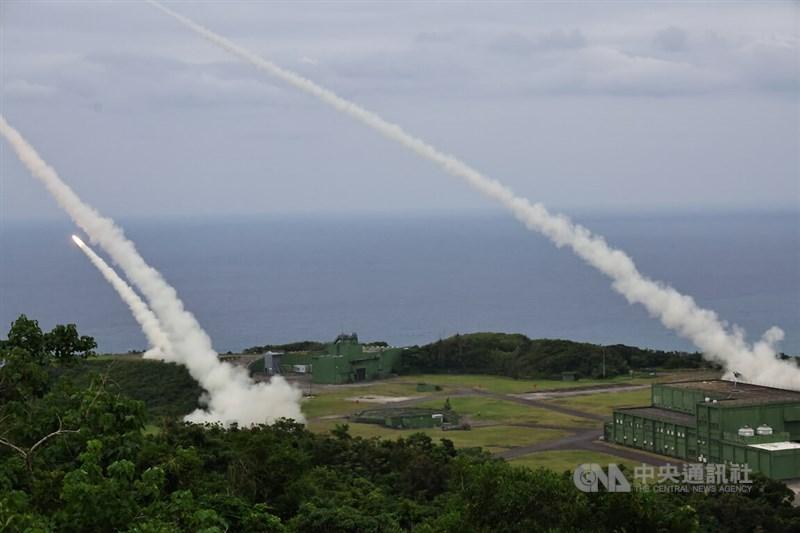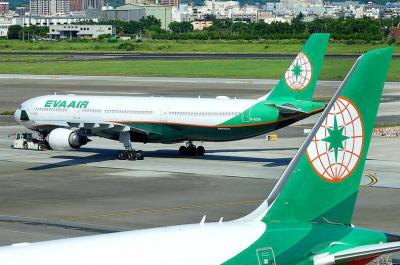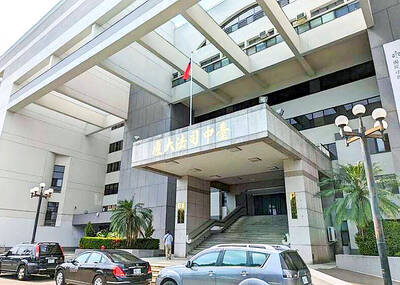Minister of National Defense Wellington Koo (顧立雄) yesterday highlighted key features of the upcoming Han Kuang live-fire exercises, including responses to gray zone coercion by China and the deployment of newly acquired weapons such as M142 High Mobility Artillery Rocket Systems (HIMARS) supplied by the US.
The Han Kuang exercises are Taiwan's largest annual military drills, with this year's live-fire segment scheduled to run for 10 days, from July 9 to 18 — twice as long as previous iterations, which typically lasted five days.
"The exercise scenario is to be extended to include gray zone harassment by the People's Liberation Army (PLA) during peacetime," Koo told the fourth meeting of the Whole-of-Society Defense Resilience Committee, an advisory group established by the Presidential Office.

Photo: CNA
To counter medium and high-intensity gray zone harassment by the PLA, the military would rehearse activating emergency command centers and raising its readiness level based on key warning indicators of a potential PLA attack, Koo said.
"The Joint Operations Command would then issue immediate combat readiness drill orders," he said, adding that Taiwan's psychological and cyberwarfare units would also conduct operations to counter public opinion, psychological and legal warfare by the PLA.
During the Han Kuang drills, newly acquired weapons would be deployed, with the armed forces prepared to integrate firepower into a "kill chain" in the event of a PLA invasion, Koo said.
Weapons that would feature for the first time in the Han Kuang exercises include M142 HIMARS procured from US defense contractor Lockheed Martin, domestically developed Land Sword II surface-to-air missiles and several types of drones, he said.
From July 9 to 12, the exercises would simulate a potential PLA invasion beginning with escalated gray zone harassment, while on July 13, the focus would be on a simulated joint fire strike and amphibious landing by the PLA, with the military conducting joint counter-landing drills, Koo said.
From July 14 to 18, the drills would simulate combat after an enemy landing, with the armed forces practicing coastal and beachhead battles, Koo said.
After the meeting, reporters asked Ministry of National Defense spokesperson Major General Sun Li-fang (孫立方) if the exercises were extended to assist the mass recall movement.
That would be a huge misunderstanding, Sun said.
The drills had been planned by the end of last year and were announced by Koo in March, Sun said, urging the public not to dismiss military officers’ efforts.
Also at the meeting, Minister of the Interior Liu Shyh-fang (劉世芳) outlined events to be held as part of the newly launched urban resilience exercises involving civil defense.
Three exercises — conducted without preset scripts and focused primarily on wartime rescue scenarios — would take place on July 15, 16 and 17 in Taichung, Tainan and Taipei respectively, Liu said.
The three drills would be held in tandem with the Han Kuang exercises to "validate civil-military communication," she said.
Air defense drills would also be held on July 15, 16, and 17 in central, southern and northern Taiwan respectively, from 1:30pm to 3pm, Liu said.
In eastern Taiwan and offshore counties, drills would be conducted from 10am to 11:30am on July 18, Liu said.
Asked if convenience stores, Taiwan Sugar Corp or Taiyen Biotech Co might take part in future exercises, Liu said it would be possible, if all goes well with PX Mart Co during next month's drills.
Some PX Mart Co supermarkets are to be tasked with issuing alarms, guiding customers to evacuate, disseminating information and coping with emergency situations, Liu said.
Asked if the supermarket chain would be subsidized for taking part in the exercises, Liu said that it would not.
PX Mart chairman Lin Ming-hsiung (林敏雄) is a member of the Whole-of-Society Defense Resilience Committee who understands the situation well and is willing to take part in the exercises, Liu said.
Meanwhile, the Ministry of National Defense today said that 29 Chinese aircraft and six vessels were detected around Taiwan in the 24-hour period before 6am.
Seventeen of the aircraft crossed the median line of the Taiwan Strait and entered Taiwan’s northern, central, southwestern and eastern air defense identification zones, the ministry said in a statement.
Some of the aircraft circled Taiwan, a map provided by the ministry showed.
The armed forces “monitored the situation and employed [patrol] aircraft, navy vessels and coastal missile systems in response to the detected activities,” the ministry said.
Additional reporting by Fion Khan

The first global hotel Keys Selection by the Michelin Guide includes four hotels in Taiwan, Michelin announced yesterday. All four received the “Michelin One Key,” indicating guests are to experience a “very special stay” at any of the locations as the establishments are “a true gem with personality. Service always goes the extra mile, and the hotel provides much more than others in its price range.” Of the four hotels, three are located in Taipei and one in Taichung. In Taipei, the One Key accolades were awarded to the Capella Taipei, Kimpton Da An Taipei and Mandarin Oriental Taipei. Capella Taipei was described by

EVA Airways today confirmed the death of a flight attendant on Saturday upon their return to Taiwan and said an internal investigation has been launched, as criticism mounted over a social media post accusing the airline of failing to offer sufficient employee protections. According to the post, the flight attendant complained of feeling sick on board a flight, but was unable to take sick leave or access medical care. The crew member allegedly did not receive assistance from the chief purser, who failed to heed their requests for medical attention or call an ambulance once the flight landed, the post said. As sick

The Taichung District Court yesterday confirmed its final ruling that the marriage between teenage heir Lai (賴) and a man surnamed Hsia (夏) was legally invalid, preventing Hsia from inheriting Lai’s NT$500 million (US$16.37 million) estate. The court confirmed that Hsia chose not to appeal the civil judgement after the court handed down its ruling in June, making the decision final. In the June ruling, the court said that Lai, 18, and Hsia, 26, showed “no mutual admiration before the marriage” and that their interactions were “distant and unfamiliar.” The judge concluded that the couple lacked the “true intention of

A drunk woman was sexually assaulted inside a crowded concourse of Taipei Railway Station on Thursday last week before a foreign tourist notified police, leading to calls for better education on bystander intervention and review of security infrastructure. The man, surnamed Chiu (邱), was taken into custody on charges of sexual assault, taking advantage of the woman’s condition and public indecency. Police discovered that Chiu was a fugitive with prior convictions for vehicle theft. He has been taken into custody and is to complete his unserved six-month sentence, police said. On Thursday last week, Chiu was seen wearing a white